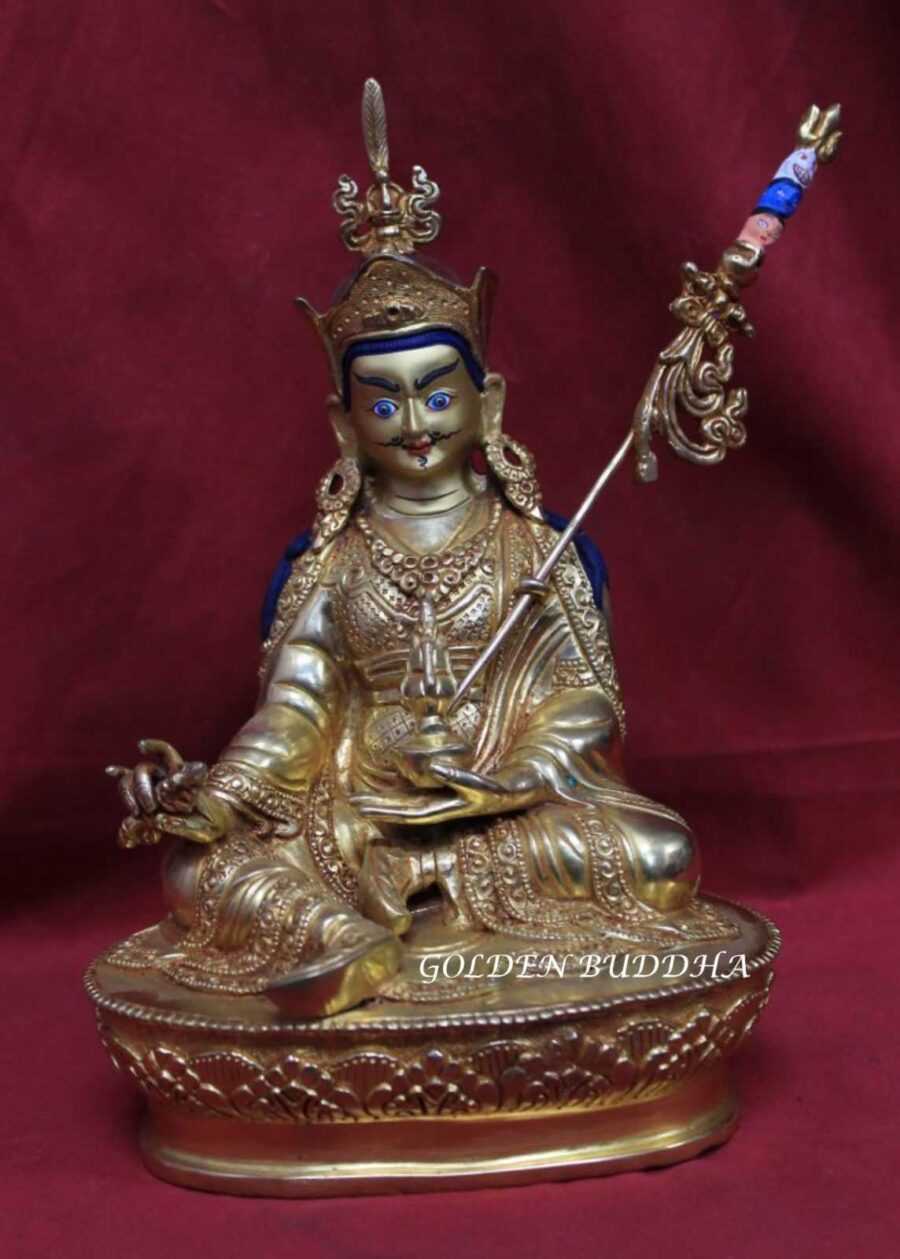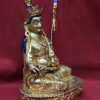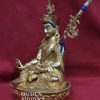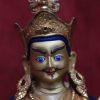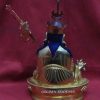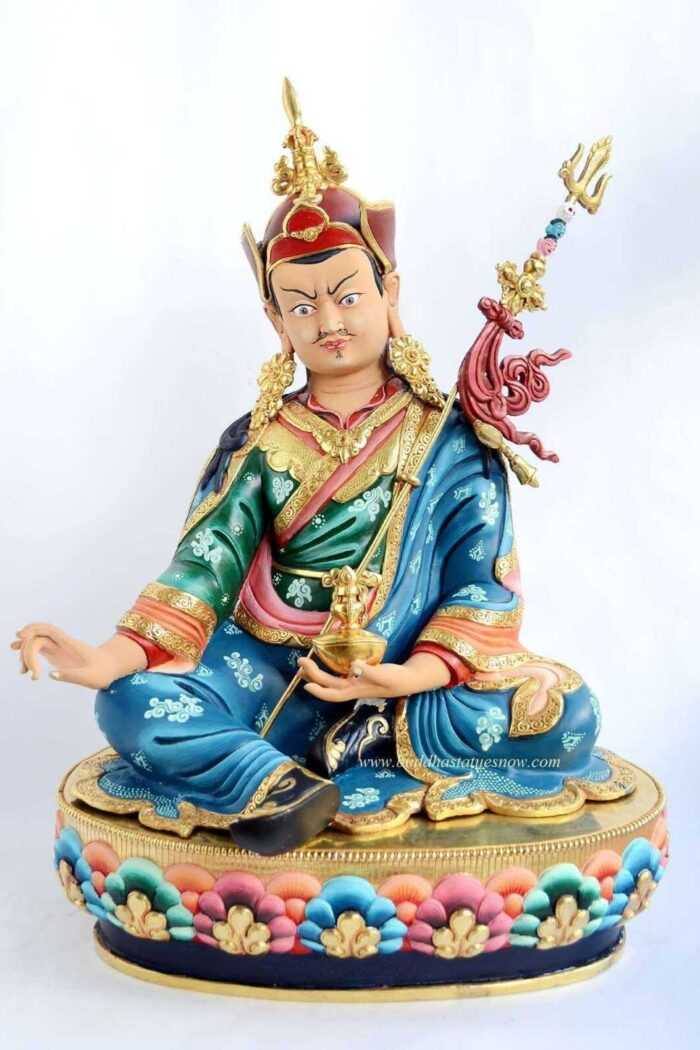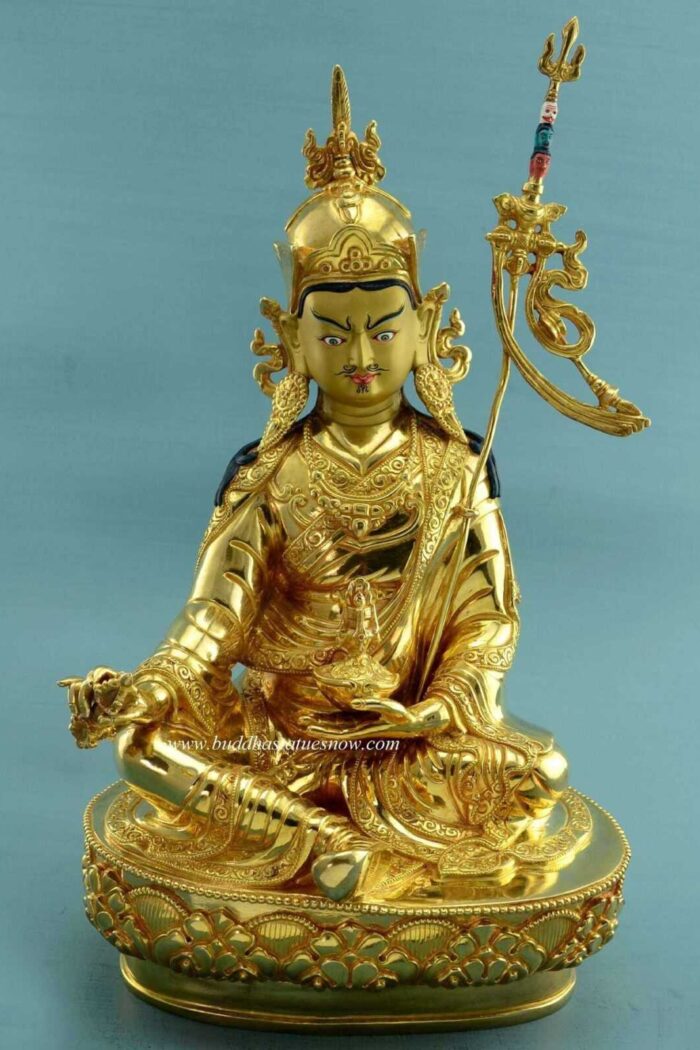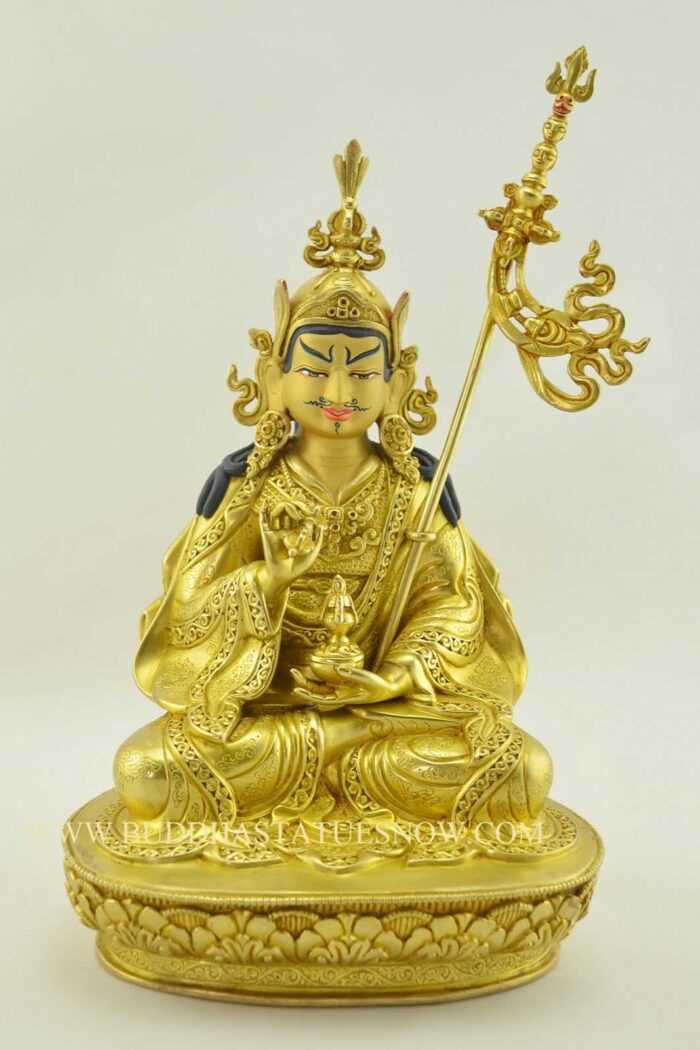Our Padmasambhava sculpture also goes by the name of “Guru Rinpoche”. Padmasambhava has both a mythical and historical background. Although he has a presence in the historical records, his spiritual background is immense in comparison.
Both accounts of his life acknowledge that he came to Tibet in the 8th century ACE at the request of the Tibetan king. The purpose of his visit was to help establish Buddhism in Tibet. He was very successful and is now known as the father of Tibetan Buddhism. However, the means by which he accomplished his task are very mythical in nature.
Padmasambhava is derived from “padma” which is an alternate name for the sacred lotus flower. Guru Rinpoche claims to have been born from a lotus flower in the land of Oddiyana. Additionally, he has magical powers that can overcome spirits who oppose the progression of Tantric Buddhism.
Our Padmasambhava sculpture (Padmasambhava) was created by the master artisans of Patan, Nepal. The characteristics of the statue were handmade using the lost wax method. As a result, the statue is portrayed in intricate detail and it is a limited edition original.
Padmasambhava Sculpture Features
Tibetan Buddhists believe he is an embodiment of Amitabha Buddha. In his left hand he holds the vessel filled with the nectar of immortality. This is because devotees have been taught that he has obtained immortality. Instead of death he is believed to have left the earthly realm on the rays of the sun with his consort. As a result, he has become affiliated with the Amitabha’s longevity attribute.
Our Padmasambhava sculpture is depicted with his khatvanga leaning against his left shoulder. On top of the khatvanga are the 3 skulls representing total release from the three worlds (Trailokya). These three realms he has transcended are desire, form and formlessness. Furthermore, Padmasambhava holds the vajra in his right hand. The vajra is very symbolic in ancient India and it translates from Sanskrit as “diamond or thunderbolt”. It is a symbol of indestructible virtue. Click here to learn more about the inception of Buddhism in Tibet.


